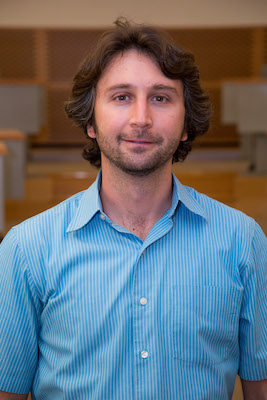ECE Departmental Seminar
VLSI Design Beyond the 50th Anniversary of Moore's Law
Prof. Emre Salman
 Wednesday, 9/28/16, 1:00pm
Wednesday, 9/28/16, 1:00pm
Light Engineering 250
Abstract: During the past decade, power consumption has emerged as a central design objective for almost any application. This talk will provide an overview of our research efforts at the NanoCAS Lab with emphasis on power-centric circuit design methodologies for a variety of applications (ranging from high performance processors to IoT based devices). After a brief historical perspective on CMOS (complementary metal oxide semiconductor) based electronics, our current projects on managing power consumption will be introduced. Research objectives, approach, and important results will be highlighted. At the end of the talk, several paths will be discussed for possible future collaborations.
Bio: Emre Salman received the B.S. degree in microelectronics engineering from Sabanci University, Istanbul, Turkey, in 2004, and the M.S. and Ph.D. degrees in electrical engineering from the University of Rochester, New York, in, respectively, 2006 and 2009. He previously worked at STMicroelectronics, Synopsys, and Freescale Semiconductor (now NXP Semiconductors). Since September 2010, he has been with the Department of Electrical and Computer Engineering, Stony Brook University (SUNY), New York, where he is an Associate Professor and the director of the Nanoscale Circuits and Systems (NanoCAS) Laboratory. His broad research interests include analysis, modeling, and design methodologies for high performance and energy efficient integrated circuits with emphasis on power, clock, and signal integrity. Emre received NSF CAREER Award in 2013 and Outstanding Young Engineer Award from IEEE Long Island in 2014. He is the leading author of a comprehensive tutorial book entitled “High Performance Integrated Circuit Design” (published by McGraw-Hill in 2012, translated into Chinese by Electronic Industry Press in 2015), which unifies interconnect-centric design methodologies for nanoscale ICs. He also authored/co-authored two book chapters, more than 50 papers in refereed IEEE/ACM journals and conferences, and holds two issued, one pending US patents.
